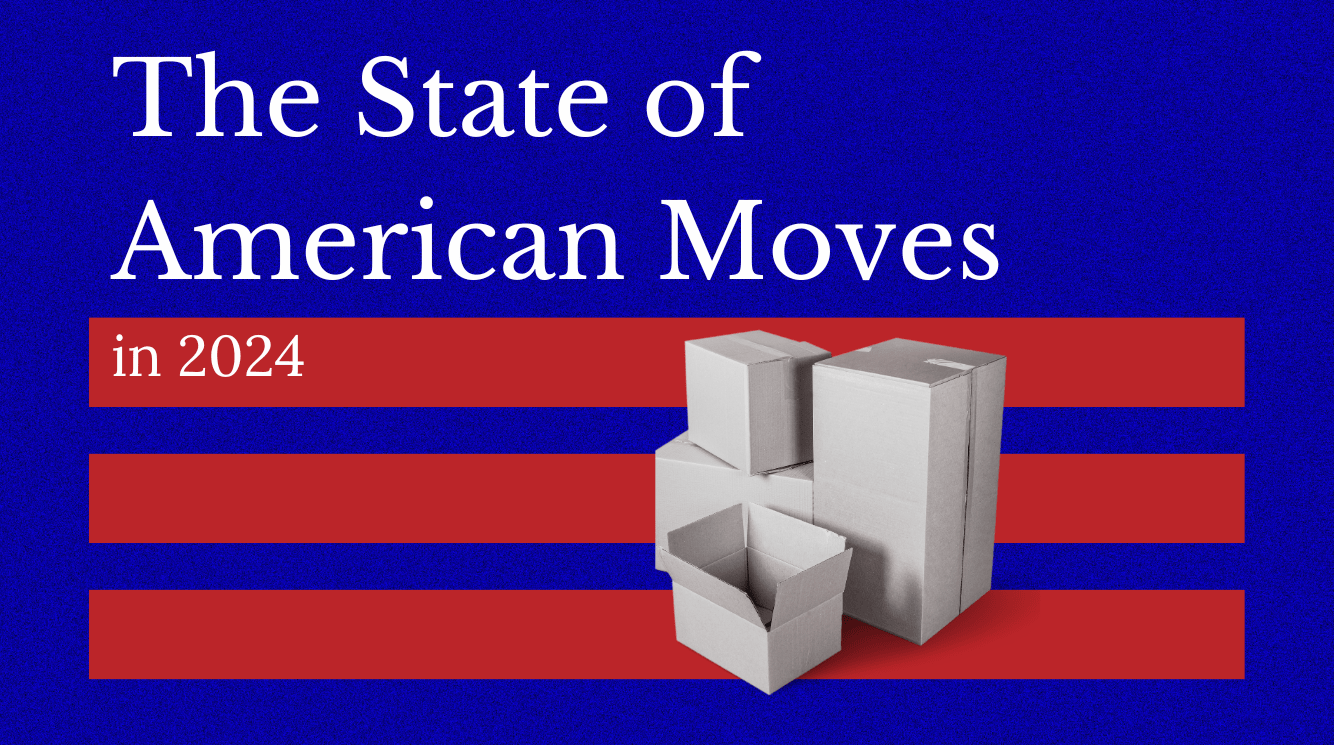Relocating Americans are moving less stuff over shorter distances as 2024 election looms

Search data from moveBuddha’s moving cost calculator shows Americans are exercising more prudence amid economic and political uncertainties.
So far in 2024, relocating Americans are less likely to make cross-country moves with trucks-full of belongings than they have been in previous years.
Searches made between January to June 2024 in the moveBuddha Moving Cost Calculator show that the average distance for prospective moves this year is 113 miles less than it was in 2020.
But it isn’t just distances that are shrinking. Where 2020 saw a nearly even three-way split between moves with small-, medium-, and large-size hauls, 2024 is seeing significantly higher search volume for small moves. Nearly 39% of prospective movers in the first half of 2024 reported having just a small haul to transport.
With a particularly polarizing election on the horizon, these more modest moving figures could suggest that Americans are waiting to see how the vote shakes out in November before planning a major relocation.

“Historically, election years tend to be slow for the moving industry,” says Anthony Disorbo, owner of American Van Lines and expert with over three decades experience in the field. “People start to feel more secure about making moving plans once the vote is in and they have a better idea of what the political climate will be in their new home.”
How might political and economic anxieties reflect in American migration patterns in 2024?
We take a closer look at the nearly 145K searches made in the moveBuddha Moving Cost Calculator during the first half of the year to gather real-time insights into how the current economic climate and upcoming presidential election may be impacting moving behaviors.
Here is the data we analyzed:
Move sizes – How much stuff do prospective movers plan to take with them? We classify the size of the haul by this breakdown:
- Small – a few items, a studio apartment, or a small one-bedroom apartment
- Medium – one to two bedrooms
- Large – three or more bedrooms
Moving distances – What is the distance between where the prospective mover currently lives and where they are headed?
Here’s what we found.
Fewer belongings to relocate

Representing nearly 39% of all searches made in the first half of 2024, small hauls are on track to represent the largest proportion of moves for the second year in a row. And by a significant margin, at that.
In 2020, search interest was almost completely equal between small, medium, and large hauls, with each of the three size categories representing a tidy third of all searches. This even split changed drastically in 2023, with small moves soaring to 43% of all searches that year.
Though having subsided slightly from 2023, the continued popularity of small moves in 2024 aligns with some of the larger demographic and economic trends that are shaping modern migration.
Small households are easier to relocate, and the typical inhabitant of a small studio is a young adult at the start of their career. Indeed, surveys have shown that Gen Z was the most likely generation to move last year. Gen Z is also more likely to be renting than older generations, and less likely to have a family in tow – two factors that make them significantly more mobile.
A higher rate of small moves also aligns with a national trend towards downsizing in an effort to live more affordably. In 2023, the National Association of Homebuilders reported that the size of single-family homes had declined to their lowest square footage since 2010 and that a growing number of Americans were downsizing just to save money on their utility bills.
“With soaring home costs, many homeowners are staying put,” says Ryan Carrigan, moving industry expert and founder of moveBuddha. “As a result, it is renters and those who are downsizing that are driving the majority of moves, often moving with fewer belongings. This trend is likely to continue as economic uncertainties persist."
Moving shorter distances

Moving vans may be getting lighter in 2024, but are they still traveling as far as they used to?
So far in 2024, search data shows that the average distance for prospective moves this year is 1,000 miles – about the distance between Chicago and Denver. This represents a 10% decrease in the average moving distance from 2020.
On the whole, over 55% of searches this year were for moves with a distance of less than 1,000 miles. Paired with a higher number of smaller hauls, this development towards shorter moves is also bucking a long-standing industry trend.
“In the moving industry, it is typical to see a correlation between the size of a move and its distance,” explains Carrigan. “In general, the greater the distance, the smaller the haul. The opposite is also true: the shorter the distance, the bigger the haul. However, in 2024, that rule is becoming less relevant as we’re starting to see both shorter distances and smaller hauls at the same time.”
It is also worth mentioning that people who are moving short distances with few belongings are the least likely demographic to require moving assistance. As such, it is possible that they are underrepresented in moveBuddha search data.
This narrowing of the gap between move distances and move sizes could be reflective of a number of real estate and economic trends. Between soaring home costs, the rise of remote work, and mass layoffs in lucrative fields like tech, there are fewer reasons for people to make cross-country moves to ever-more expensive cities like New York, LA, San Francisco, Seattle, or Austin.
For single Gen Z career-starters, the country’s most mobile demographic, this confluence of economic factors may mean choosing instead to live in more affordable, less trendy cities closer to their hometowns. Indeed, in recent years, mid-size college towns have proven to offer the ideal mixture of culture, career, and affordability to freshly graduated young adults.
High housing costs and mortgage rates are also making long-distance moves less feasible for more established households. Large- and medium-sized moves too have decreased in distance since 2020 by 3.5% and 7.2% respectively. Especially given the upcoming election, families may be increasingly wary of making an interstate move amidst so much political and economic uncertainty.
Moving strategically in 2024
Relocating Americans are exercising increased caution this year, opting for smaller moves that are closer to home.

“Overall, this has been a very slow year for the moving industry,” Carrigan says. “Movers in 2024 are making highly strategic, economically-driven relocation decisions in response to current market conditions. That means fewer moves, shorter distances, and lighter hauls.”
And between the imminent presidential election and soaring mortgage rates, who can blame them for wanting to wait for some more stability before making a major life change?
“I expect that 2025 will see a lot more action,” predicts Disorbo. “Once we get past the election, and when mortgage rates are likely to start dropping, things will start to pick back up again.”
Not what you were looking for?
Check out other categories that can help you find the information you need!

